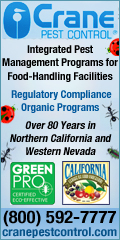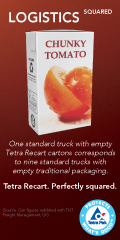
| Archives/Subscribe | www.clfp.com | Contact Us | August 7, 2012 |
Proposition 65/Sulfur Dioxide Update
After months of negotiations with the Office of Emergency Health Hazard Assessment (OEHHA), CLFP was successful in getting an exemption for dried fruit from the recent Proposition 65 listing of Sulfur Dioxide (SO2). On July 29, 2011, SO2 was added to the Proposition 65 list as known to the state to cause reproductive toxicity, based on the findings of the state's qualified experts, the Developmental and Reproductive Toxicant Identification Committee (DARTIC). Last month OEHHA released the proposed Maximum Allowable Dose Level (MADL) for SO2 for public comment. The MADL of 220 ug/d is based on inhalation data. All of the studies that formed the basis for listing SO2 were of exposure to SO2 as a gas. There are currently no available studies on exposure solely to SO2 by the oral route. However, based on review of relevant information, OEHHA has concluded that exposure to SO2 by the oral route is expected to pose no more risk, and may pose less risk, than exposure to the equivalent amount by the inhalation route. In addition to releasing the proposed MADL, OEHHA also released an Interpretative Guidance document for dried fruit. In this document, OEHHA concludes that consumption by the average consumer of dried fruit treated with SO2 will not result in an exposure to SO2 exceeding the proposed MADL. Therefore, a warning is not required under Proposition 65 at this time for exposure to SO2 from consumption of dried fruit. This conclusion was reached as a result of several meetings that CLFP had with OEHHA staff to assess the impacts that this listing would have on dried fruit. CLFP worked with the Dried Fruit Association (DFA) to present data to OEHHA to show that: (1) a significant amount of off-gassing of SO2 occurs after the fruit is treated, (2) a minimal amount of SO2 in the gaseous form remains on the fruit, and (3) the form of sulfur present on the finished product is mostly bound-SO2, which is in a state of equilibrium, and poses no risk. The highest estimate of exposure to SO2 through consumption of any dried fruit for which consumption data are available is 191 micrograms per day (µg/day) (dried peaches). OEHHA may revise the Interpretive Guideline on dried fruits. CLFP is currently working to assure that dried tomatoes are included. The Interpretative Guidance for Dried Fruit can be viewed at http://www.oehha.ca.gov/prop65/law/pdf_zip/SO2driedfruitIG.pdf. |
|
| CALIFORNIA LEAGUE OF FOOD PROCESSORS 2485 Natomas Park Dr., Suite 550 Sacramento, CA 95833 Phone: (916) 640-8150 Fax: (916) 640-8156 www.clfp.com |
 |



